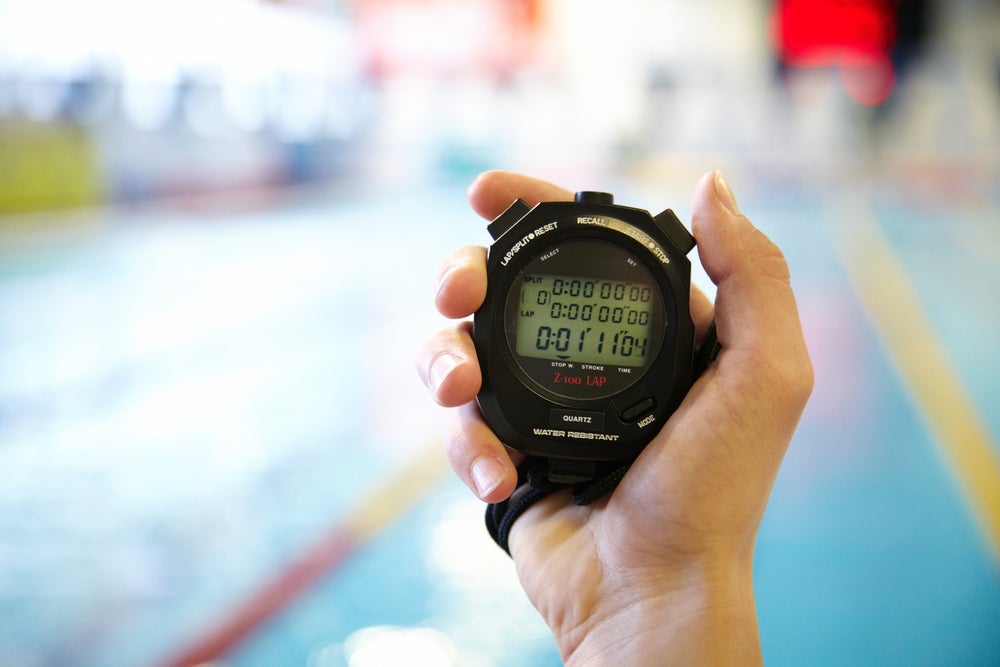The Best Test Sets for Swimming

Photo: <a href=http://shutterstock.com>Shutterstock.com</a>
I have my athletes do broken sets—rather than one long continuous swim—for testing. I find that it’s easier for swimmers to pace themselves during the test, making the results more accurate for use in workouts. In both of the test sets (one for sprint racers and the second for Olympic distance or longer) the goal is to swim the fastest sustainable speed for each repeat. Avoid sprinting on the first repeat only to fade on the last one, resulting in a big discrepancy in times. After the test, you’ll know your T-pace (test pace) that you can apply to future workouts.
For both tests, warm up with your choice of swimming, kicking and pulling for about 15 minutes. Near the end of your warm-up, include 4–6 x 25 at goal pace or slightly faster with 10 seconds of recovery between each.
Swimming Test Set: Sprint Distance
Swim 3×100 fast. Recover for 20 seconds between each. Note your time for each 100, aiming for no more than 5 seconds difference between each one. Your T-pace per 100 is the average of all three times.
Swimming Test Set: Olympic, 70.3, Ironman
Swim 3×300 fast. Recover for 30 seconds between each. Note your time for each 300, aiming to have less than 15 seconds difference between each. Average the times to determine your average 300 pace. Your T-pace per 100 is that number divided by 3.
Once you have determined your T-pace, use it to design swim workouts. For example, let’s assume your T-pace is 1:45 (105 seconds) per 100. If you’re a sprint-distance racer, swim a set of 5–8 repeats of 50 on a repeating send-off of 1:15. Your goal would be to swim each 50 faster than your T-pace (105 divided by 2, or 52.5 seconds). By swimming shorter segments faster than T-pace, you can work toward improving your speed over longer distances. Retest your T-pace every six to eight weeks so you can make adjustments to your workouts.
Gale Bernhardt co-authored Workouts in a Binder: Swim Workouts for Triathletes and coaches amateur to elite athletes through Galebernhardt.com.